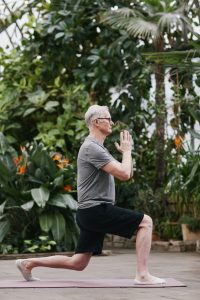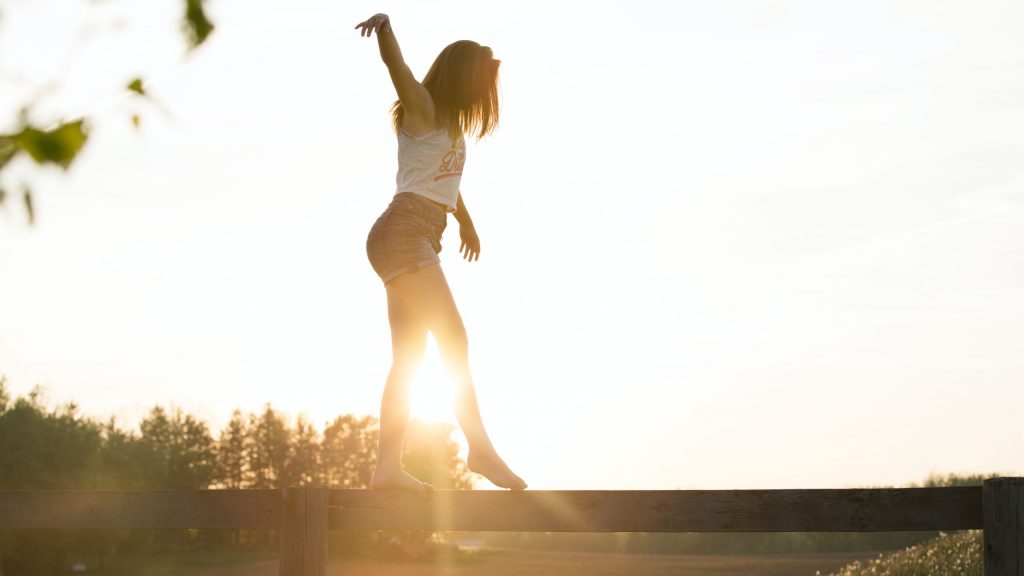IT’S A BALANCING ACT
“Falling is not an option.” Credit to Tai Chi practitioner and author George Locker for this fantastic quote which co-incidentally, is the title of his book. So why is balance important? Then how does posture affect balance? More and more studies show that poor balance is associated with serious health problems, including back pain. As we age, the risk of falls seems to increase exponentially. It probably comes to no surprises, that the ability to balance is intricately linked to falls prevention and reducing the risk of falls. Yet I am curious, when thinking about balance, do you think about posture?
6 SCARY STATISTICS ABOUT FALLS
- Falls are Australia’s # 1 cause of injury, hospitalisation and death, representing 42% of injury hospitalisations and 40% of injury deaths.
- Falls requiring hospitalisation are more common in older people and most likely to occur in the home.
- Over 1/2 of injury hospitalisations from falls involve a fracture.
- In 2020-21, there were 243,000 hospitalisations from falls.
- In 2019-20, 5,300 deaths were attributed to falls.
- Falls are the 2nd leading cause of unintentional injury deaths, ranking only behind motor vehicle accidents.
POSTURE’S ROLE IN FALLS PREVENTION
Posture is your body’s ability to adapt to whatever the task at hand. It is an active process whether sitting, standing or moving, posture involves the deliberate activation of muscles throughout your spine and body to help you sustain whatever position you’re in. Posture is dynamic as it varies between standing, running, gardening, studying, or nursing a toddler. Our various postures require a lot of muscular control. It is this voluntary, muscular firing that stops us falling both when holding a sustained posture or when transitioning through various postures throughout the day.


“The only time it’s bad posture is when you don’t have another option.” —Beth Lewis
There is a problem when it comes to always “going with the flow.” We aren’t jellyfish nor are we designed to be constantly pushed along or fall to the ground in the ever changing tide or currents of life. Weirdly enough, we are human. We’re designed to adapt and to hold a posture relevant to the task at hand.
HOW OUR MUSCLES HOLD US UPRIGHT
Now this next section might get a little nerdy. If you want to skip to Working on Balance, feel free to scroll through. However, I think it’s essential to understand a little of the sensors involved within the muscles and how they require muscular work to work. A big part of a working muscle is something known as the muscle spindle. This part of the muscle has the highest amount of satellite cells (known as proprioceptors) and when activated, they send information to the brain to let the brain know where these muscles are in space. Think of trying to stand on one leg, for example your right leg. After a few seconds, you might start swaying further to your right. The muscles on the outside part of the right calf will fire, to stop you from falling, the body feels this and is then pulled back towards centre.
Just like the calf, your spine is also rich in muscles and exceptionally rich in its amount of muscle spindle density. In fact, the spine plays the biggest role in proprioceptive feedback, alerting the brain where it is in space compared to any other area of the body.
“The spine plays the biggest role in proprioceptive feedback, alerting the brain where it is in space compared to anywhere in the body.”
Two areas of your body that are often overlooked when it comes to balance are located at either extremity of the spine. These are the areas where the volume of muscle spindles is at the absolute highest anywhere in the body. The pelvis and sacro-iliac joints of the lower back & the cervical occipital junction and where the head meets the spine are the dominant balance and postural centres within the body. These two areas are by far the most common problem areas we see in the office, ie people coming in with back pain or neck pain.


Sustaining posture requires continual feedback from the action potentials that are firing in the muscles spindles, through to the nervous system. This is where that movement is monitored and then any changes are quickly transmitted back to those working muscles. Altering their tension and firing for their ultimate performance. This is part of the reason that makes sustaining any posture for any given length of time so hard. The muscles’ ability to sustain that position fatigues with time and particularly after 30 minutes, it’s almost impossible to sustain any good posture. Think about trying to sustain a “good” seated posture. It becomes almost impossible quite quickly.
The posture’s we assume throughout the day ideally involve enough muscular control and firing that they are both ergonomic, functional and protective to our spine and other important organs of our bodies. Posture protects more than just your vertebrae, discs and spinal cord. It goes a long way to opening up your lungs, diaphragm, aiding digestion and even reducing blood pressure.
WORKING ON BALANCE


Now for the fun part. Anyone, of any age, in any demographic, can train and improve their posture. It is potentially one of the easiest life hacks you could have and will dramatically reduce your risk of falls, minimise fatigue and back pain, increase energy and add to your health span too.
There’s 4 key steps to improve posture:
- AWARENESS– for many of our patients, once they’ve been to our offices they remark, “I’m much more aware of my posture now.” It’s this simple process of awareness that allows them to change. Catching yourself sliding into a hunched posture on the couch, or being aware that you’ve been stuck behind the screen for 2 hours is the best way to help yourself break the habit.
-
VARIETY– As we see above, it’s the sustained postures that are the hardest. Your body loves variation and the more you can alternate, the better. From sitting to standing, walking, lying and everything in between. Ask your body to move frequently and differently throughout the day and you’ll significantly increase the demand on your postural muscles and as such see an improvement in balance. “
“You forget that you’re supposed to move. . .if you don’t use it, it you lose it.”
- CHALLENGE– How long can you stand on one leg? Or how long can you sit at the desk without relying on the back rest? Can your head comfortably rest against the head rest while driving a car? Work on each one of these things. An example we’ve recently challenged our clients with is:
-
Single leg standing. How long can you go and is it symmetrical?
< 40 yrs of age: 60 seconds each leg
40-60 yrs of age: 30 seconds on each leg
> 60 yrs of age: 15 seconds on each leg
Once this gets easy, challenge yourself. Possibly add a weight in one hand or close your eyes. We all know eyesight is intricately linked to balance but to maximise feedback from your muscles, can you balance eyes closed?
- ARM & LEG USE– It might be very hard depending on your work to vary your posture very much or nearly as frequently as ideal. No one is asking the truck driver to stop every 30 minutes or the computer technician to break from their desk every 30 minutes, it’ll be nigh on impossible. But perhaps, reaching overhead with one arm, reaching behind or across the body is possible. Alternatively, bringing one foot up occasionally onto the seat of the chair. Although simple, there are once again active movements. They’ll force muscles to work and improve posture too.
HOLDING IT ALL TOGETHER
For decades now, the debate has been raging over whether or not proprioception, our awareness of where our body is in space, is actually a sixth sense. Either way, what we do clearly know is that our proprioceptive ability and awareness of where our limbs are in space deteriorates with age. As this awareness worsens, our likelihood of falls skyrockets. We can train this, we can improve it. Falling is not an option and there’s something that we can do about it. Start with your spine and see, can we use our own muscles to help keep us from taking that next unexpected trip or tumble?
References
- Injury in Australia: Falls. 2022 November 25. Australian Institute of Health and Welfare.
- Falls. 2021 April 26. World Health Organization (WHO).
- Heroux, M., Butler, A., Robertson, L., Fisher, G., and Gandevia, S. Proprioception: a new look at an old concept. 2022 March 11. Journal of Applied Physiology, Vol 132, No 3.
- Taylor, J.L. Proprioception. 2009. Encyclopaedia of Neuroscience Pages 1143-1149.
- Proske, U., Gandevia, S. The Proprioceptive Senses: Their Roles in Signaling Body Shape, Body Position and Movement, and Muscle Force. 2012 October 1. Physiological Reviews, Vol. 92, No. 4.
- Falls Risk Assessment Tool (FRAT). Physiopedia.
- Individuals Falls Risk Assessments- Stay On Your Feet. 2012 December 19. Queensland Health- Stay On Your Feet.

